Public Toilets Case Studies with Pratt Institute: Paris, France
Written with MFA student Tong Zhao
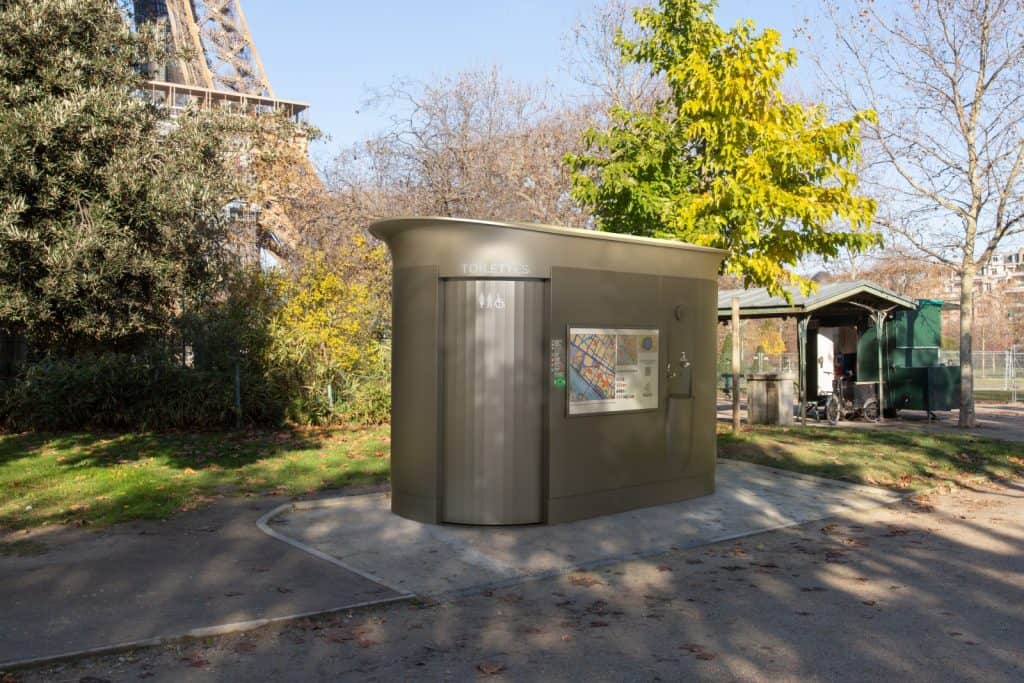
Proposed public toilet, called a Sanisette, near Eiffel Tower in Paris
With all the coffee and wine you’ll be drinking in Paris, it’s good to know there are plenty of free public restrooms. Cafes are everywhere in Paris: go to the counter, order a drink, head to the bathroom, go back to the counter, drink, pay, business done in less than five minutes. https://joinusinfrance.com/transcript/will-you-hate-paris-when-you-go/.
Paris’ first public toilets were installed in 1981. JCDecaux, whom many of us know for street furniture worldwide, installed the first public restrooms with a charge of one franc. Twenty five years later, in 2006, the public toilets, known as the Sanisette, was finally was made free of charge. Until 2024 there were 400 Sanisettes available in Paris, overseen by the government. In preparation for the Summer 2024 Olympics, 150 new Sanisettes were installed, with 285 more to be installed by May 2025.
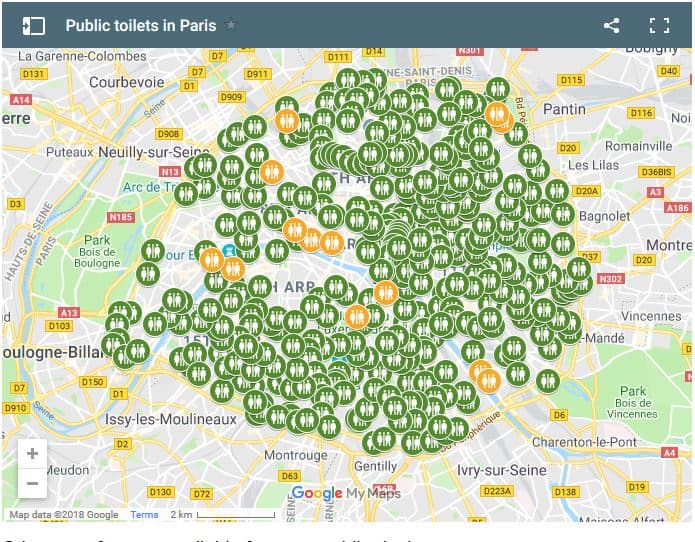
Official map of public restrooms in Paris
Public Toilet Wayfinding
When people search online, there are a few sources that have mapped Paris’ restrooms. The official Paris map allows users to filter by Sanisette, public toilets in a park, and public toilets.
EUtouring allows people to easily search the public restrooms and filter by paid or free and accessible.
For those searching on their phone, they can download an app called ‘Flush toilet finder Map’ or another app called “Toilets In Paris”. Toilets in Paris locates all public toilets from parks and gardens, and of the RATP transportation network in Paris with or without internet connection.
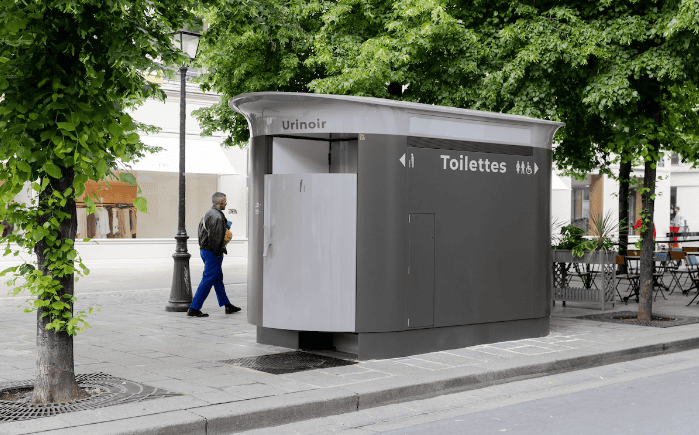
Proposed new Sanisette modeling highlighting the urinal area
The Sanisette
Most of the over 400 free public toilets located all over the city of Paris are the Sanisettes, located close to popular tourist attractions and are designed for the disabled. These Sanisettes, designed by Patrick Jouin, are mostly open from 6am to 10pm, except for 150 of them on the main roads, which are available 24/7. “We have integrated a curved roof that covers and protects the entrance to the restrooms and urinals, becoming a fifth facade that evokes the silhouette of Parisian rooftops and newsstands with their rounded shapes. From the first restroom, we have retained the contrast between the exterior surface and the entrance doors, making them highly visible and intuitive for users, with a fluted effect reminiscent of the cast iron posts of the elevated metro.”
The new Sanisettes “feature a large, accessible main cubicle and an external fountain with soap, as well as a second urinal cubicle. Another new feature is that all interfaces can be accessed without contact.” This aligns with recent restroom upgrades and design work that have been eliminating touch to operate fixtures.
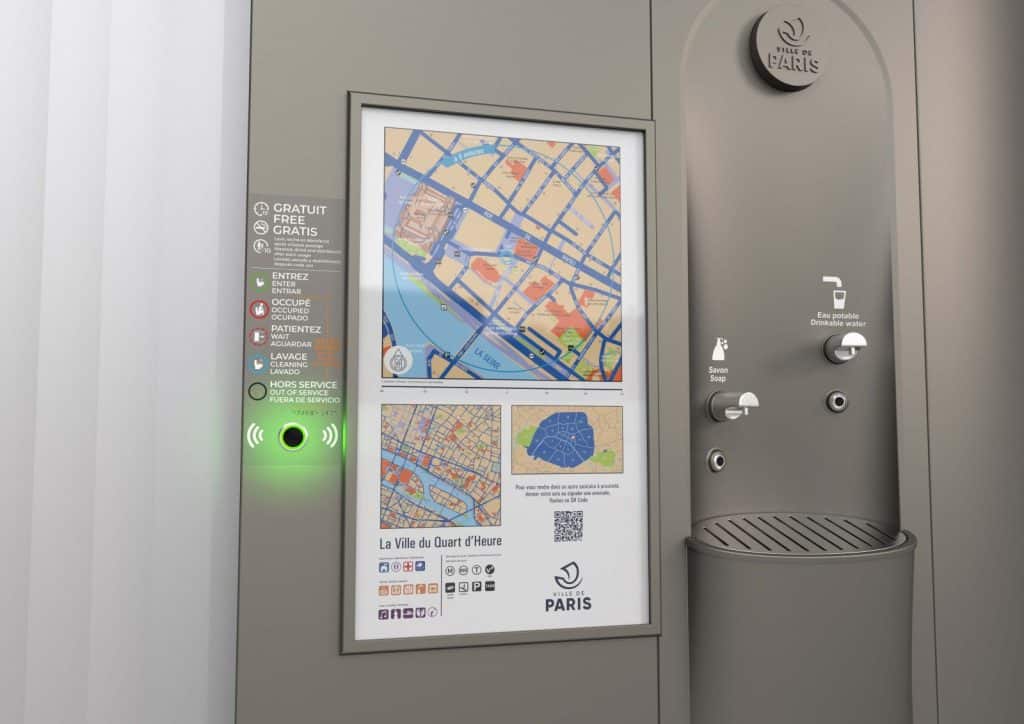
Signage for occupancy and water fountain on new Sanisette model
Maintenance and security of Sanisette
The signage design relies on standardized icons to better allow for universal understanding, accompanied by audio and braille information. Positioned directly above the doors, it aids orientation towards the toilets or urinals, arranged to separate queues and ensure greater privacy.
Although the design features multiple signage indicators, it is not always obvious to those who have never used a self cleaning toilet that they need to wait for the cleaning process between each use. “How to Use a Sanisette (and Not Die of Humiliation): A Horror Story” describes one man’s “mortifying” experience of getting caught in the Sanisette during the self cleaning period. Another account from 2013 of someone using a Sanisette describes, “when that vague discomfort was transformed into an outright fear of public toilets.” They go on to explain, “The real problem I have with the Sanisette is the fact that you are forced to rely upon technology to keep your private business private.” While contactless operations have their benefits, the comfort of the user could still be improved.
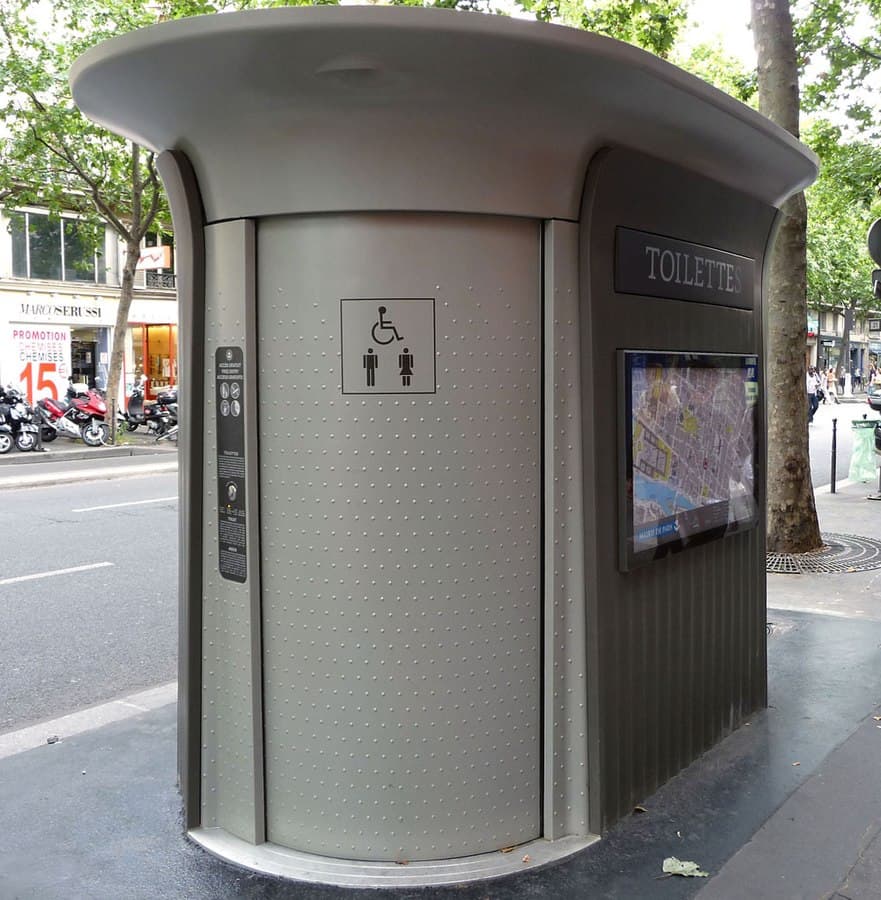
Automatic sliding door on the Sanisette
Material Analysis
The Sanisette features a minimalist design crafted from durable materials like stainless steel and concrete, ensuring resilience and longevity. The use of stainless steel not only offers a modern aesthetic but also enhances hygiene and ease of maintenance. The integration of these robust materials with thoughtful design allows the Sanisette to fit various architectural contexts, balancing functionality with visual appeal. Inside, a large opalescent glass strip along the side allows natural light to enter the cabin, creating a connection with the outside. White, green, and gray colors have been chosen to enhance the brightness of the space and harmonize with the city’s aesthetic.
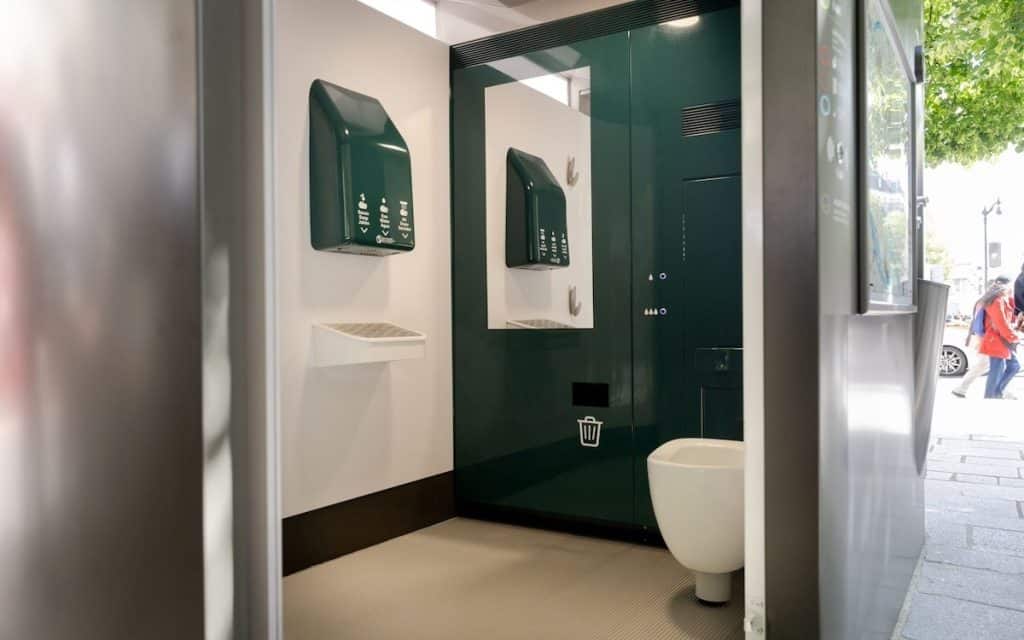
Inside the new Sanisette, highlighting the contactless fixtures, natural lighting, and materials
Conclusion
The effectiveness of self-cleaning technology is critical to maintaining hygiene standards, which underscores the need for regular maintenance and rapid response to technical issues. Strategic placement in high-traffic and accessible areas maximizes usability and convenience, ensuring easy access for all, including persons with disabilities. Aesthetic integration with the surrounding environment aids public acceptance, making customizable designs that blend with local architecture more desirable. Educating the public on how to use the facility and the benefits of keeping it clean reduces misuse and vandalism, emphasizing the importance of clear signage and public events. In addition, addressing vandalism and misuse through robust design, durable materials, and possibly monitoring or alarm systems can mitigate damage, but privacy concerns must be considered. These experiences emphasize the importance of thoughtful design, maintenance, and public engagement for the successful implementation of public restroom solutions in urban environments.
If any readers have further insight on Paris’ public toilets today or are interested in continuing the conversation, feel free to reach out to Margot Kleinman at mkleinma@pratt.edu. Continue following along to see the biweekly posts of research to learn more about public toilets design! All work included belongs to Pratt Institute.
